The phrases ‘4 pot calipers’ , ‘2 pot calipers’ and ‘single pot calipers’ are often used to describe motorcycle brake calipers, but what do these phrases actually mean and what do the pots do?
More ‘pots’ in a brake caliper is often one of the factors used as an indication of the stopping power of the brakes, so the more pots a caliper has the more stopping power it has (so a 4 pot caliper is able to stop the bike quicker then a 2 pot caliper).
Other factors would be the size of the pots as well as the type of brake pads used, type of brake hoses (braided or rubber) and the weight of the bike and rider and other factors.
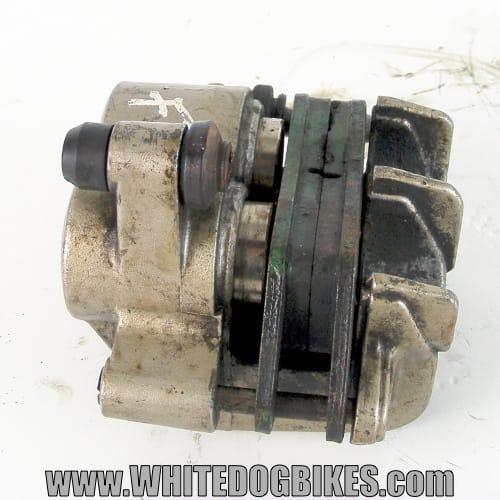
A Honda 2 pot brake caliper
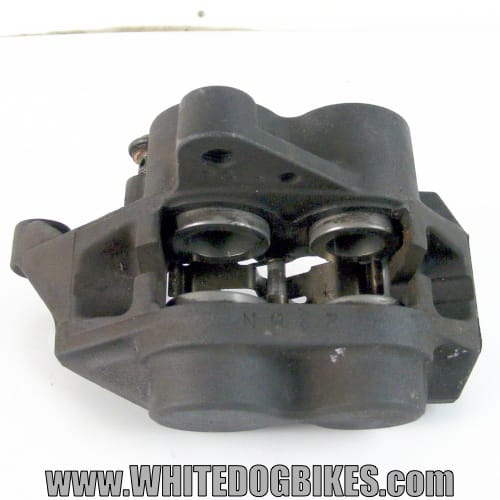
The term ‘pots’ refers to the number of pistons (sometimes known as ‘cylinders’) the caliper has. Pistons in a caliper are the round metal tube like objects on the inside of the caliper that press on the brake pads when the lever or pedal is used causing the bike to slow up and/or stop.
If you look at the 2 pictures above, you can see the pots (cylinders/pistons), these are shiny metal cylinders on the inside of the calipers.
Note: Brake caliper ‘pots’ are (helpfully!) also known as ‘pistons’ or, less often ‘cylinders’, which all mean the same thing.
‘Caliper cylinders’ are different to ‘brake master cylinders’ and are used in different parts of the braking system.
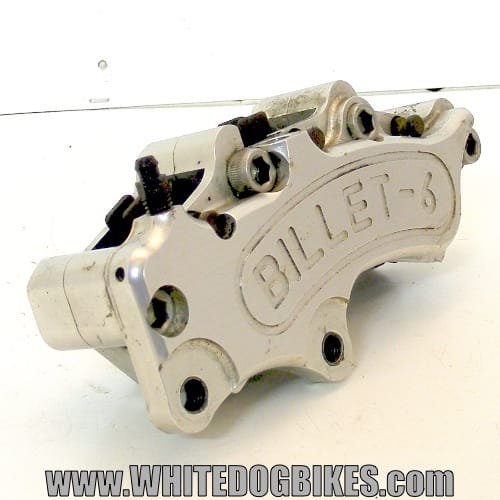
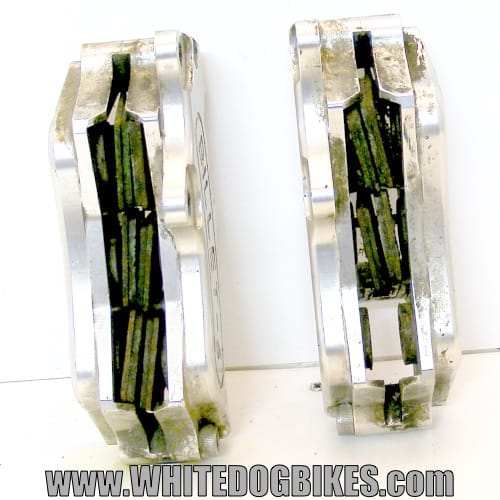
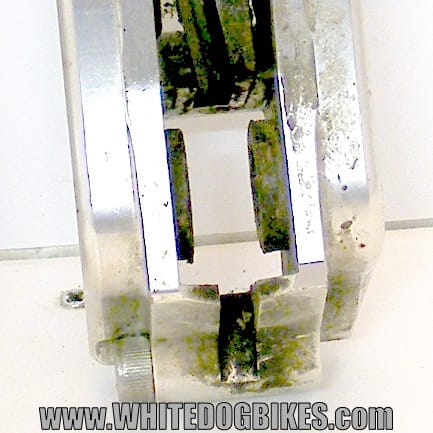
The images above show the pots in a ZXR750 6 pot racing brake caliper (not cheap but they provide very good stopping power)
Caliper pistons (pots) can also be configured in different ways, with the pistons on the same side or opposing sides.
The pictures below show 2 different configurations of caliper pots.
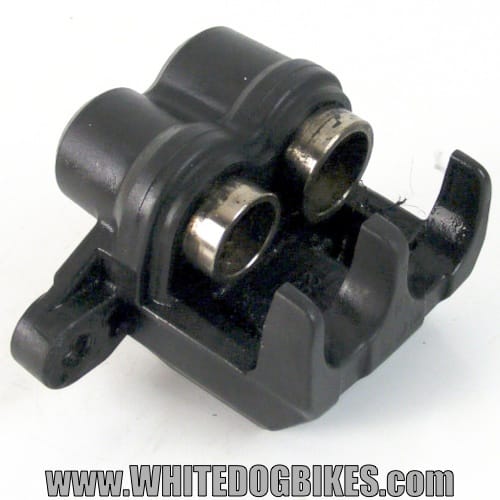
The rear brake caliper from a YZF-R1 has 2 pistons on 1 side
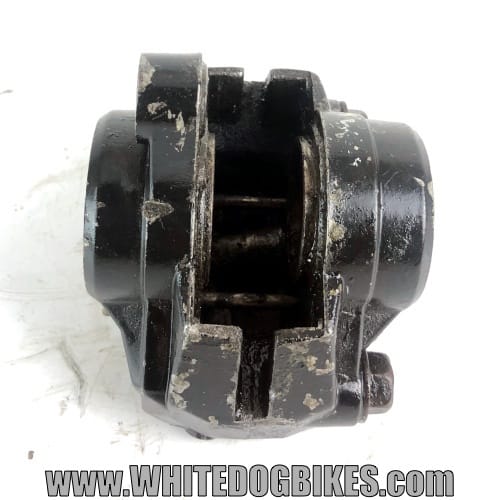
The rear caliper from an XJ600 Diversion) has 1 piston on each side.
Both the calipers above are from the rear brake set up and are both 2 pot calipers, even though they have the pistons in different locations.
Disclaimers:
The information provided on this page is ‘to the best of our knowledge’ and should not be taken as 100% accurate!!
To keep this page as a free resource for people to use, there are affiliate links (mainly Amazon) throughout the article. These affiliate links help maintain the cost of running this blog (basically, if you visit Amazon through one of the links and buy something, we make a few pence!).

Leave a Reply